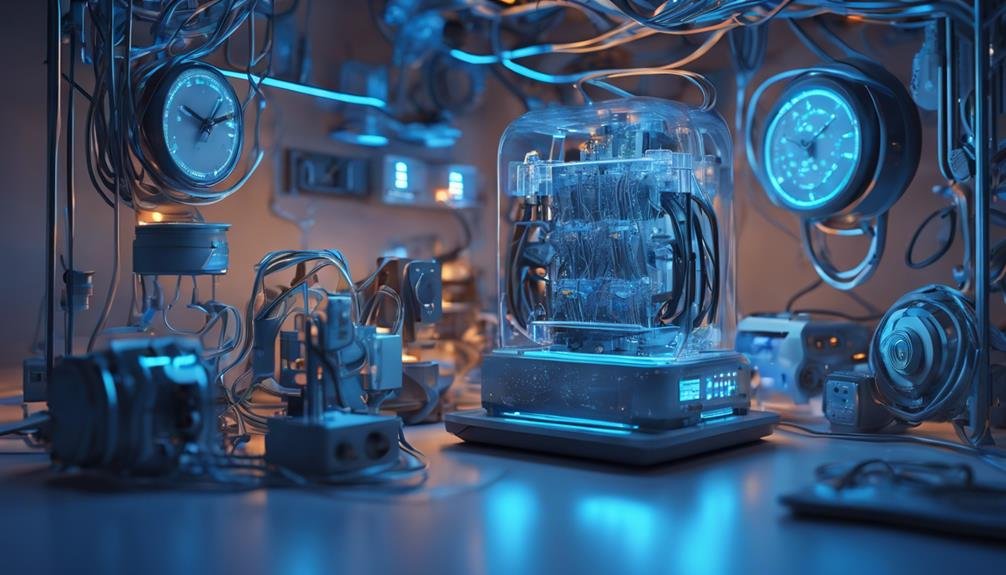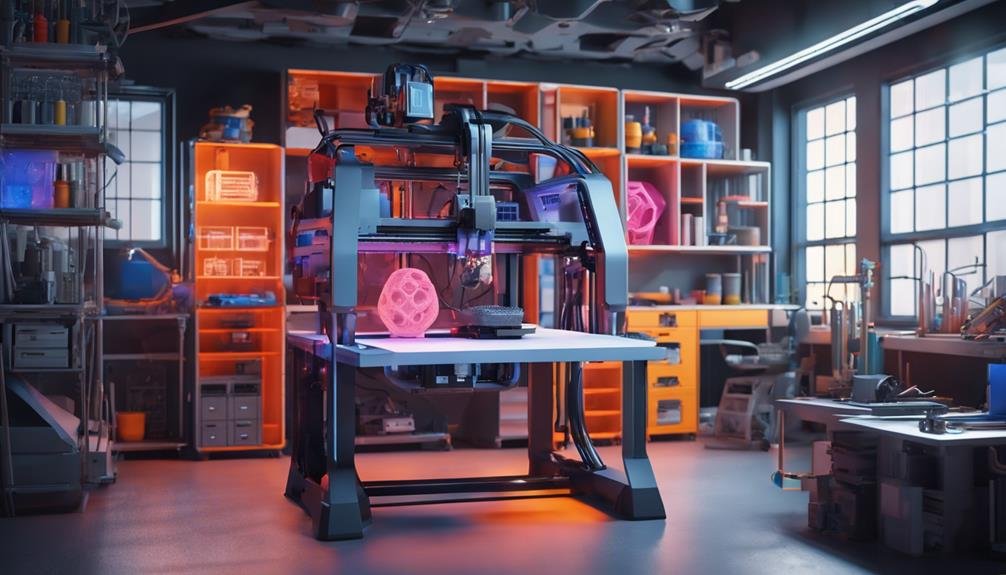When you opt for 3D printing an object, the total cost is influenced by a variety of factors, including the type of 3D printer used, the complexity and volume of the 3D model, the material costs, print quality, and time, along with post-processing steps, energy consumption, and maintenance needs. Material costs vary greatly, ranging from $20 to $70 per kilogram for FDM filaments, and outsourcing services can cost anywhere from $30 to $15,000. To accurately estimate costs, you'll need to take into account each of these factors, and as you investigate these cost components, you'll discover the full range of expenses involved in 3D printing.
Factors Affecting 3D Printing Costs
When you start a 3D printing project, different factors come into play that greatly influence the total cost.
The type of 3D printer you use, for instance, plays a significant role in determining the printing costs. Printer prices can range from $200 to $150,000, and you'll need to factor in upkeep costs of approximately $0.21 per hour.
The complexity and volume of your 3D model also impact the total cost, especially if human guidance is required for intricate designs.
Material costs are another significant factor, with thermoplastics like ABS and PLA priced between $20 to $70 per kg, and resin costs ranging from $50 to $300 per liter.
Print quality and printing time also affect the total cost, as higher-quality prints often require more time and material.
Moreover, post-processing steps like curing, cleaning, and polishing add to the overall expense.
3D Printer and Material Costs
You'll also need to factor in the cost of the 3D printer itself, along with the materials you'll be using, which can vary widely depending on the type and quality of the materials. The cost of materials, such as printer filament, can range from $20 to $70 per kilogram for common materials like PLA or PETG. For SLA printing, resin prices start at around $50 per liter for entry-level resins and can go up to $400 for professional-grade resins.
Here's a breakdown of the material costs:
| Material | Price Range |
|---|---|
| PLA/PETG Filament | $20-$70/kg |
| Entry-Level Resin | $50/L |
| Professional-Grade Resin | $400/L |
When calculating the printing cost, you'll need to take into account the material costs, in addition to the cost of the 3D printer itself. The printing service price will also depend on the type of printing service you choose. Understanding these costs will help you estimate the cost of 3D printing and plan your project accordingly. By factoring in these expenses, you can better budget for your 3D printing project and achieve the desired results.
Energy Consumption and Maintenance

The energy consumption of your 3D printer is an important aspect to take into account, as it can result in continual costs that accumulate over time. You'll need to think about the energy costs associated with 3D printing, as they can add up quickly.
For instance, the estimated annual energy cost for an Ultimaker 3D printer is approximately $50. However, energy costs can vary greatly depending on the power consumption specifications of your printer and local energy prices.
Regular use of your 3D printer will incur ongoing energy expenses, so it's crucial to factor these costs into your overall printing expenses.
In addition to energy consumption, maintenance is another significant aspect to think about. Over time, you'll need to replace consumable parts, such as nozzles and hotends, to ensure your printer continues to function well.
Understanding these costs and maintenance needs is important for budgeting and planning your 3D printing expenses. By factoring in energy consumption and maintenance costs, you can better anticipate and manage your overall printing expenses, ensuring you can continue to create high-quality prints without breaking the bank.
Calculating 3D Printing Service Costs
Calculating the cost of 3D printing services can be a complex task, but understanding the factors that influence pricing is key to finding a cost-effective solution for your project.
You'll need to take into account the type of 3D printing material used, as different materials have varying price points. For instance, using a high-end metal alloy will be more expensive than a basic plastic filament.
The location of the 3D printing service provider also plays a significant role in determining the total cost. Researching and comparing prices from different providers is vital to finding the best option for your budget.
When computing the cost, you should also factor in the complexity of the item being printed. A simple design will be less expensive than a complex, intricate model.
Moreover, the specific requirements of your project, such as the desired level of detail or the need for specific colors, will impact the final price.
Post-Processing and Profit Margins

When factoring in the total cost of 3D printing, don't overlook post-processing expenses, which can add a significant 20-50% to your final bill. These costs, including cleaning, curing, and painting, can greatly impact your total 3D printing cost.
To make sure you're covering these expenses and making a profit, it's vital to include a 30% profit margin in your pricing. This will help you cover unexpected expenses and time investments. Proper post-processing can improve the final appearance and functionality of the 3D printed object, making it a critical step in the process.
Failure to account for post-processing and profit margins can lead to underpricing and financial losses. Balancing post-processing costs and profit margins is important for sustainable 3D printing business operations. By factoring in these costs, you can make sure you're pricing your services accurately and avoiding financial losses.
Cost Comparison and Optimization
To optimize your 3D printing expenses, you need to weigh the costs of different materials, printer types, and design complexities against each other. This cost comparison is important in determining the total cost of your 3D printing project.
The cost of materials, for instance, can range from $20 to $70 per kilogram for FDM filaments and $50 to $300 per liter for resin. The type of printer you use also affects the price, with outsourcing 3D printing services ranging from $30 to $15,000 depending on the model and material used.
When calculating the total cost of 3D printing, you should also consider the time it takes to design and print the model, along with any overhead costs associated with the process. Understanding these additional costs is essential for accurate pricing.
Frequently Asked Questions
How Much Does It Cost to Print a 3D Object?
When you're wondering how much it costs to print a 3D object, consider factors like object complexity, print duration, model size, material selection, and layer thickness, as these variables greatly impact the final cost.
How Much Does 3D Printing Material Cost?
You'll find 3D printing materials vary in cost depending on options like FDM, SLA, or SLS, with factors like quality, supply sources, and printing techniques affecting the cost, ranging from $20 to $400 per unit.
How Much Does a 3D Printer Cost per Hour?
You're probably wondering how much your 3D printer costs per hour. Factors like print speed, hourly wage, machine maintenance, electricity rate, and rental fee all impact your hourly cost, which averages around $0.21, but can vary depending on your setup.
What Is the Cheapest Way to 3D Print?
You can 3D print on a budget by using affordable filaments, leveraging open-source software, and exploring DIY kits or local libraries' printing services, all while keeping costs low without sacrificing quality.
Conclusion
As you venture into the world of 3D printing, understanding the costs involved is essential. By considering factors like printer and material costs, energy consumption, and maintenance, you can accurately calculate the expenses.
Moreover, post-processing and profit margins play a significant role in determining the final cost. By optimizing these factors, you can minimize costs and produce high-quality prints efficiently.